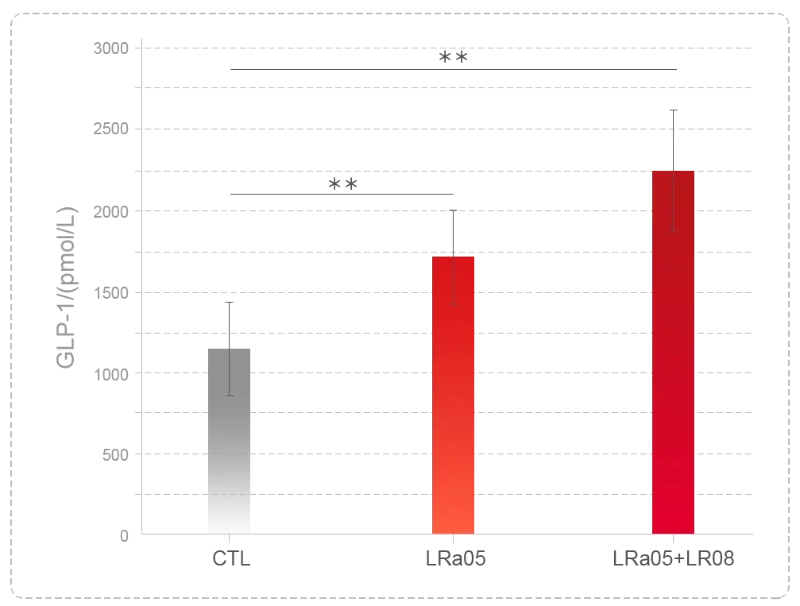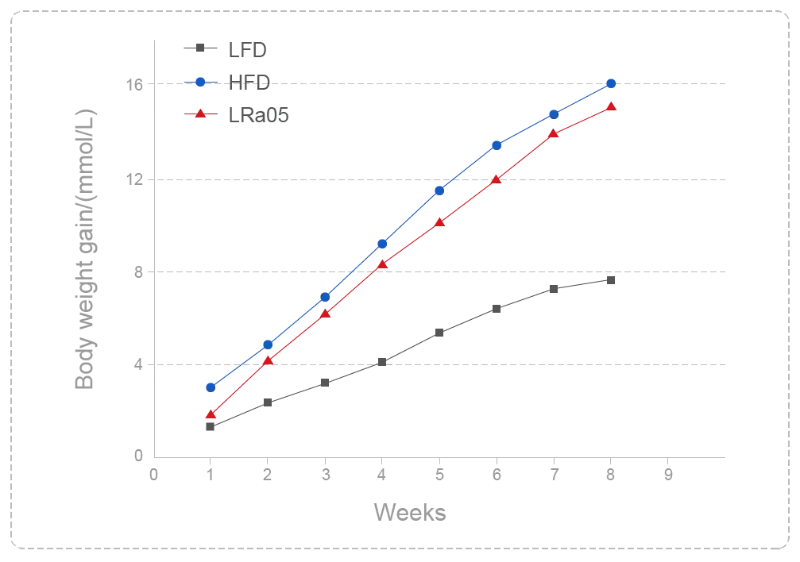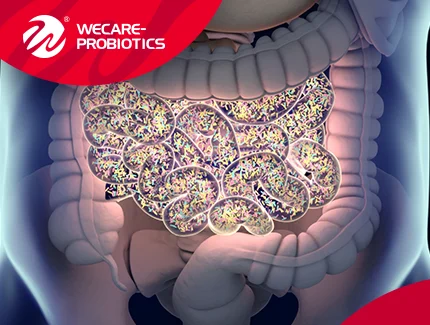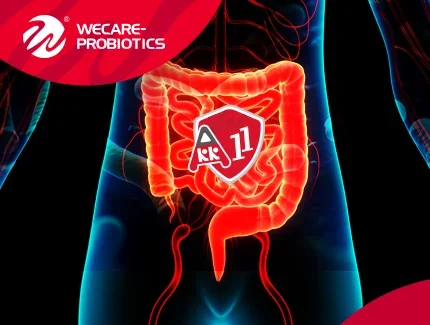Industry Insights
Home > News > Industry Insight > A Probiotic Agent for Regulating Intestinal Hormone GLP-1 Levels and its Application
A Probiotic Agent for Regulating Intestinal Hormone GLP-1 Levels and its Application

Abstract
The invention pertains to a probiotic agent designed to modulate the gut hormone GLP-1 levels, encompassing the Lacticaseibacillus rhamnosus LRa05 strain (CGMCC No.1.12734) and its application in obesity treatment. The LRa05 strain significantly enhances GLP-1 expression in intestinal endocrine cells, reducing body weight and serum ALT and AST levels in obese individuals.
Introduction
Obesity, a chronic disease that severely impairs human health, is linked to increased risks of cardiovascular diseases and diabetes. The World Health Organization defines obesity as abnormal or excessive fat accumulation that poses a health risk, with a BMI over 25 kg/m² indicating overweight and over 30 kg/m² indicating obesity. Approximately 13% of the world's adult population is obese, largely due to high-fat and high-sugar diets and reduced physical activity from urbanization and transportation changes.
Human gut microbiota, a complex ecosystem with over 10 trillion microorganisms, plays a crucial role in nutrition, metabolism, and immunity. Obese individuals often have a reduced number of beneficial gut bacteria and altered metabolic byproducts like short-chain fatty acids.
Current therapies include various probiotic treatments aiming to control weight gain, prevent obesity, and improve metabolic parameters. However, the instability and short half-life of GLP-1, a key hormone in regulating glucose and lipid metabolism, limit the efficacy of these treatments.
Materials and Methods
Strains and Culture Conditions
Lacticaseibacillus rhamnosus LRa05 (CGMCC No.1.12734)
Limosilactobacillus reuteri LR08 (CGMCC No.1.12733)
Strains were cultured under standard anaerobic conditions in MRS broth at 37°C.
Results
The weight level is closely related to human health. Abnormal weight, especially overweight and obesity, are significant risk factors for chronic diseases such as cardiovascular diseases, diabetes, and certain cancers.
Lacticaseibacillus rhamnosus LRa05 can significantly enhance the secretion capacity of STC-1 cells for GLP-1 (glucagon-like peptide-1). One of the main functions of GLP-1 is to stimulate pancreatic β-cells to secrete insulin, thereby lowering blood glucose levels. It also helps slow the absorption of sugar from food, control postprandial blood glucose levels, increase satiety by acting on the brain, reduce food intake, and thereby control weight and improve metabolism.
Moreover, clinical trials have found that the combination of Limosilactobacillus reuteri LR08 strain and Lacticaseibacillus rhamnosus LRa05 strain has a more significant effect on the aforementioned functions compared to the use of a single strain, providing a new strategy for the prevention, improvement, or treatment of obesity.
1. Promoting GLP-1 Secretion in STC-1 Cells

Figure 1: The effect of different probiotic groups on GLP-1 expression in STC-1 cells
STC-1 is a mouse intestinal endocrine cell line that shares some characteristics with natural L cells, which are the cells in the gut that produce GLP-1. Therefore, STC-1 cells are widely used in studies on the secretion mechanism of GLP-1. As shown in Figure 1, LRa05 can significantly promote the secretion of GLP-1 in STC-1 cells. The combined use of LRa05 and LR08 can enhance the secretion of GLP-1.
2. Enhancing Intestinal GLP-1 Levels in Obese Mice

Figure 2: Measurement results of GLP-1 levels in the intestinal tissues of mice in different groups
Data from the model group (HDF) and the normal group (CTL) show that 12 weeks of a high-fat diet significantly reduced GLP-1 secretion in the intestines of mice. After intervention with LRa05, the GLP-1 levels in the intestines of mice significantly increased, indicating that LRa05 has the potential to control blood glucose by promoting GLP-1 secretion. The combination with LR08 further increased the secretion of GLP-1 in the intestines of mice, showing a synergistic effect that can more effectively regulate metabolism.
3. Enhancing Intestinal GLP-1 Levels in Non-Alcoholic Fatty Liver Disease Rats

Figure 3: Measurement results of GLP-1 levels in the intestinal tissues of rats in different groups
Data from the model group (NAFLD) and the normal group (CTL) show that 14 weeks of a high-fat diet significantly reduced GLP-1 secretion in the intestines of rats. At the same time, significant increases in serum alanine aminotransferase (ALT) and aspartate aminotransferase (AST) were observed, indicating liver damage caused by a high-fat diet. After intervention with LRa05, the GLP-1 levels in the intestines of rats significantly increased, indicating that LRa05 can promote GLP-1 secretion in the intestines of non-alcoholic fatty liver disease rats, thereby regulating blood glucose and protecting the liver. Additionally, the combination of LRa05 and LR08 can further enhance these effects.
4. Improving Lipid Accumulation in High-Fat Diet Mice

Continuous intervention with LRa05 at a dose of 1 billion CFU per day for 8 weeks showed that LRa05 can effectively inhibit obesity induced by a high-fat diet and significantly suppress weight gain, as compared to the low-fat diet group (LFD), high-fat diet group (HFD), and high-fat diet + LRa05 intervention group (LRa05).
Summary
Research by Microbiome Probiotics has demonstrated that the LRa05 strain can significantly increase GLP-1 expression in small intestinal endocrine cells and significantly increase GLP-1 expression in the intestinal tissues of obese individuals, reduce their weight, and lower serum ALT and AST levels. Additionally, the combination of Limosilactobacillus reuteri LR08 and Lacticaseibacillus rhamnosus LRa05 strains can mutually enhance and promote each other, synergistically improving the symptoms of obesity. Therefore, the LRa05 strain and its compound formulations have great application prospects in the preparation of food or health products for the prevention, improvement, or treatment of obesity.









 Leave a Message
Leave a Message Email
Email Linkedin
Linkedin